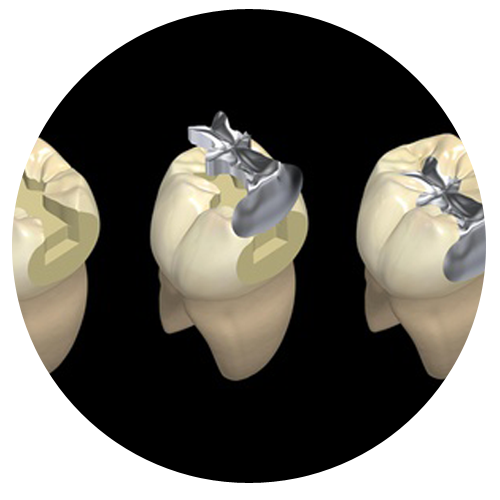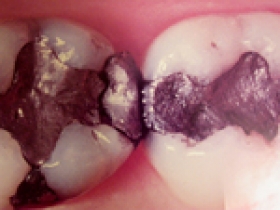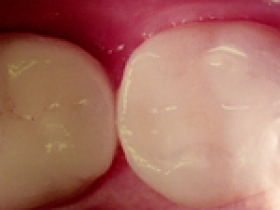Dental Fillings

White Fillings
A white filling (composite) is a tooth colored resin and quartz-like material.
Advantages
Composites can be matched exactly to teeth so they are very esthetically pleasing. They bond to tooth structure and do not require and undercut preparation. This protects the tooth from fracturing. Composites contain no mercury and are environmentally non-toxic.
Disadvantages
Composites require more chair-time to place and the composite material is more expensive than silver fillings. However I believe the higher investment is offset by the health benefits and reduced risk of tooth fracture. It also just simply looks and feels beautiful.
Composite Fillings
Silver Fillings
A gray colored filling material that is 50% silver/tin and 50% mercury.
Advantages
Silver fillings have been used for 125 years and they require less time in the chair and are relatively inexpensive.
Disadvantages
Silver fillings cannot bond to tooth structure so they require an undercut preparation. This weakens the tooth and makes it more susceptible to fracture over time or when biting something hard. Also mercury is highly toxic and has been linked to neurological and kidney disease. Health Canada in 1996 has recommended to dentists to limit the use of silver fillings in children, pregnant women, and elderly patients.
Dental Filling Materials
Amalgam Filling
Alternatives
White fillings or Composites are an excellent alternative to silver fillings. They are conserving of tooth structure and pose no environmental risk. In cases of extensive decay an onlay or crown would be an even better alternative.
Fillings – Before & After


Safe Amalgam Removal
We follow the International Academy of Oral Medicine and toxicology (IOMT) recommendation for removal of mercury filling from the mouth.
- Cooling the filling with copious water and air while drilling substantially reduces the amount of mercury vapor the filling releases.
- Cutting the Amalgam into large pieces
- Using a high-volume suction
- Providing the patient with an alternative source of air
- Using a rubber dam – A rubber dam isolates the teeth from the rest of the mouth and throat
- The dentist and the assistant should remove and dispose of their gloves and the rubber dam once the fillings have been removed.
- Patients mouth should be thoroughly rinsed for at least 20 seconds after amalgam fillings removal.
- Air purification system should be used.
- A Patient’s eyes should be protected with protected glasses to prevent contact with spattered particles.
